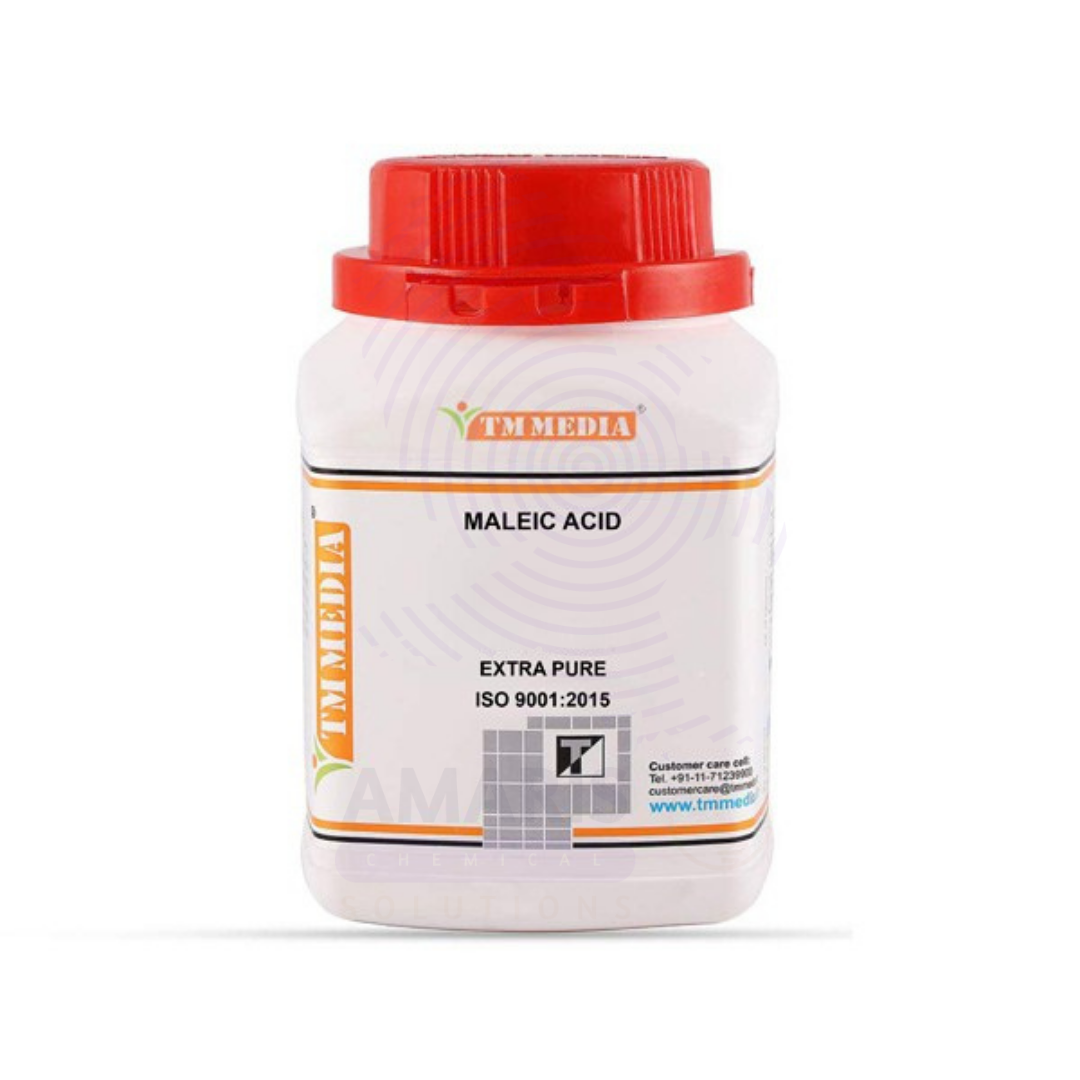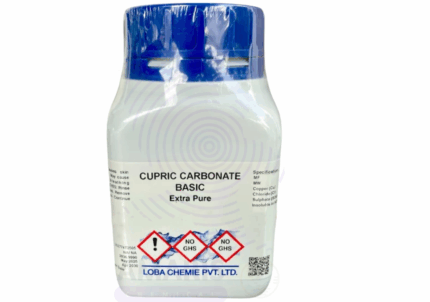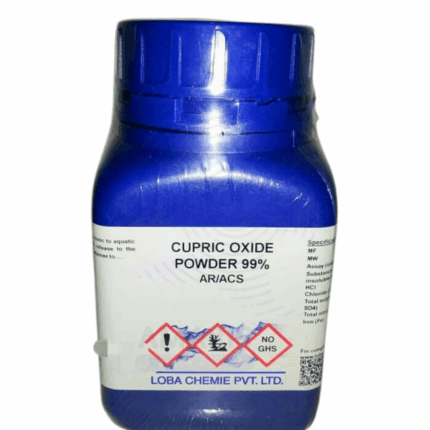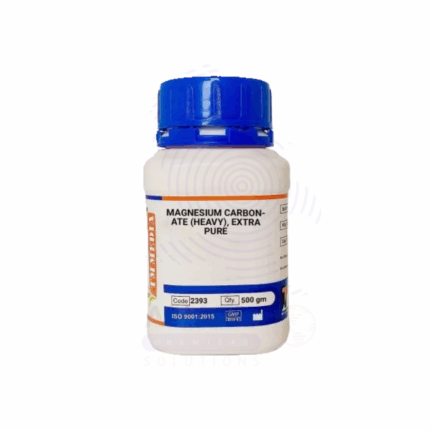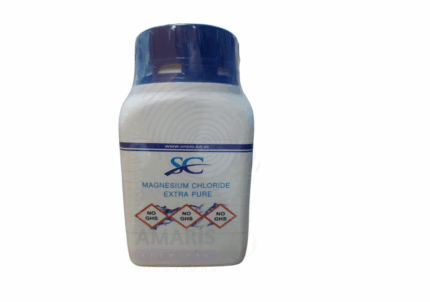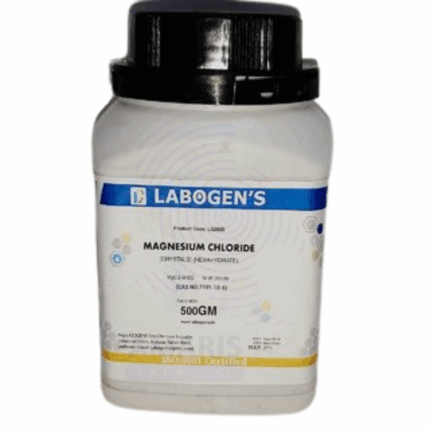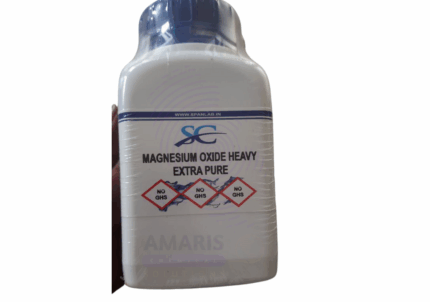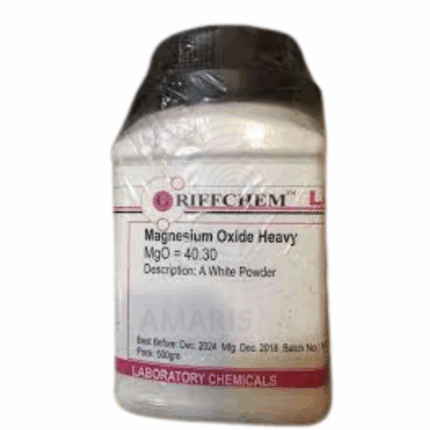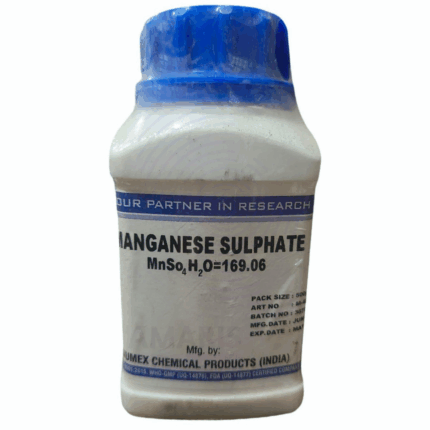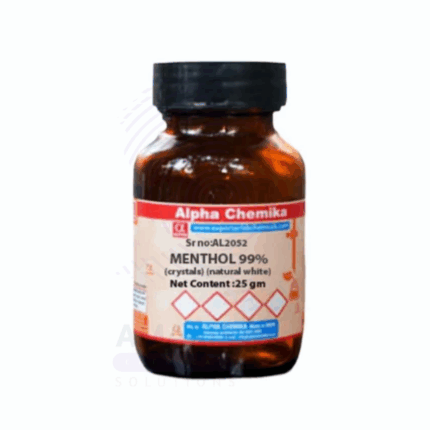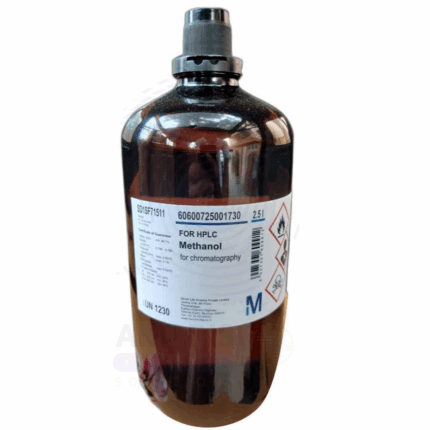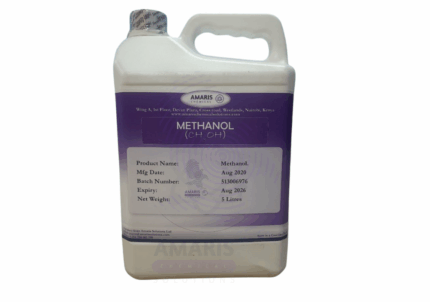
Maleic Acid Extra Pure
$ 18.00 Original price was: $ 18.00.$ 17.89Current price is: $ 17.89.
Maleic Acid Extra Pure is a high-purity organic compound valued for its strong acidic properties and wide range of laboratory and industrial applications. It appears as a white crystalline solid and is primarily used in organic synthesis, particularly in the production of polymers, resins, and plasticizers. In research laboratories, Maleic Acid serves as a buffering agent, a precursor to fumaric acid, and an intermediate in various chemical reactions. Its excellent solubility in water and compatibility with other reactants make it especially useful in biochemical and analytical procedures. The extra pure grade ensures minimal contamination, providing reliable results in sensitive experiments and high-precision manufacturing processes.
Maleic Acid Extra Pure
Primary Uses
- pH Buffer Preparation:
- Commonly used in the preparation of buffer solutions for biological and chemical experiments due to its defined pKa values.
- Intermediate in Organic Synthesis:
- Acts as a precursor or reactant in laboratory synthesis of esters, anhydrides, and other organic compounds.
Secondary Uses
- Analytical Chemistry:
- Used in complexometric titrations and other analytical methods involving organic acids.
- Study of Geometrical Isomerism:
- Useful in educational demonstrations and experiments comparing cis-trans isomerism (with fumaric acid).
- Polymer Research:
- Sometimes employed in laboratory studies of copolymerization reactions, especially with styrene or vinyl acetate.
| PACK SIZE |
500 grams Plastic Tin |
|---|
1. Basic Identification Attributes
- Chemical Name: Maleic Acid
- Synonyms: Cis-butenedioic acid, Toxilic acid
- CAS Number: 110-16-7
- Molecular Formula: C₄H₄O₄
- Molecular Weight: 116.07 g/mol
- Appearance: White crystalline solid
- Odor: Odorless or slight acid-like smell
- Solubility: Very soluble in water, alcohol, and acetone
- Grade: Extra Pure
2. Safety & Hazard Attributes
- GHS Classification:
- Skin Corrosion/Irritation – Category 2
- Eye Damage/Irritation – Category 1
- Specific Target Organ Toxicity (Single Exposure) – Category 3
- Acute Toxicity (Oral) – Category 4
- Hazard Statements:
- H302: Harmful if swallowed
- H315: Causes skin irritation
- H318: Causes serious eye damage
- H335: May cause respiratory irritation
- Precautionary Statements:
- P261: Avoid breathing dust
- P264: Wash hands thoroughly after handling
- P280: Wear protective gloves/protective clothing/eye protection/face protection
- P305 + P351 + P338: IF IN EYES: Rinse cautiously with water for several minutes
- P301 + P312: IF SWALLOWED: Call a POISON CENTER/doctor
- Personal Protective Equipment (PPE):
- Safety goggles
- Chemical-resistant gloves
- Lab coat
- Dust mask or respirator if handling large amounts or powder form
- First Aid Measures:
- Inhalation: Remove to fresh air; seek medical attention if symptoms persist
- Skin Contact: Wash with soap and water; remove contaminated clothing
- Eye Contact: Rinse cautiously with water for several minutes; seek medical advice
- Ingestion: Rinse mouth; do not induce vomiting; get medical help
- Fire Hazards:
- Non-flammable but may decompose upon heating to release carbon oxides
- Use dry chemical, water spray, CO₂, or foam for extinguishing nearby fire
3. Storage & Handling Attributes
- Storage Conditions:
- Store in a tightly sealed container
- Keep in a cool, dry, and well-ventilated area
- Protect from moisture and direct sunlight
- Handling Tips:
- Avoid contact with skin, eyes, and clothing
- Use in a fume hood or well-ventilated area to avoid inhalation of dust
- Clean up spills immediately using appropriate PPE
4. Laboratory Applications
- Primary Uses:
- Intermediate in organic synthesis of resins, coatings, and plasticizers
- Reagent in analytical chemistry for identifying and complexing metal ions
- pH adjustment and buffer preparation in lab environments
- Secondary Uses:
- Precursor in polymer manufacture (e.g., maleic anhydride-derived resins)
- Educational experiments on cis-trans isomerism (comparison with fumaric acid)
- Corrosion inhibition studies in research
SAFETY PRECAUTIONS
Personal Protective Equipment (PPE):
- Wear a lab coat, nitrile gloves, and chemical safety goggles.
- Use a dust mask or operate in a fume hood to minimize inhalation.
Handling:
- Avoid contact with skin, eyes, and clothing.
- Prevent dust formation and avoid breathing dust or vapors.
- Wash thoroughly after handling.
- Use only in well-ventilated areas.
Storage:
- Store in a cool, dry, well-ventilated location.
- Keep the container tightly sealed and protected from moisture.
- Keep away from strong oxidizing agents and bases.
FIRST AID MEASURES
Inhalation:
- Move the person to fresh air immediately.
- Seek medical attention if breathing becomes difficult or if symptoms persist.
Skin Contact:
- Wash affected areas thoroughly with soap and water.
- Remove contaminated clothing.
- Get medical attention if irritation or burns occur.
Eye Contact:
- Rinse cautiously with clean water for at least 15 minutes.
- Remove contact lenses if present and easy to do.
- Seek immediate medical help.
Ingestion:
- Rinse mouth with water.
- Do not induce vomiting.
- Seek medical advice or contact a poison center immediately.
FIRE FIGHTING MEASURES
Flammability:
- Maleic acid is combustible in fine powder or high temperature.
Extinguishing Media:
- Use dry chemicals, CO₂, or foam.
- Water spray may be used to cool containers but may spread dust.
Hazardous Combustion Products:
- Can release carbon monoxide (CO), carbon dioxide (CO₂), and irritating fumes when decomposed by heat.
Firefighter Protection:
- Wear self-contained breathing apparatus (SCBA) and full protective clothing.


 Preservatives(food)
Preservatives(food) Flavor Enhancers
Flavor Enhancers Acidulants
Acidulants Sweeteners
Sweeteners Antioxidants
Antioxidants Colorants(food)
Colorants(food) Nutraceutical Ingredients (food)
Nutraceutical Ingredients (food) Nutrient Supplements
Nutrient Supplements Emulsifiers
Emulsifiers
 Collectors
Collectors Dust Suppressants
Dust Suppressants Explosives and Blasting Agents
Explosives and Blasting Agents Flocculants and Coagulants
Flocculants and Coagulants Frothers
Frothers Leaching Agents
Leaching Agents pH Modifiers
pH Modifiers Precious Metal Extraction Agents
Precious Metal Extraction Agents
 Antioxidants(plastic)
Antioxidants(plastic) Colorants (Pigments, Dyes)
Colorants (Pigments, Dyes) Fillers and Reinforcements
Fillers and Reinforcements Flame Retardants
Flame Retardants Monomers
Monomers Plasticizers
Plasticizers Polymerization Initiators
Polymerization Initiators Stabilizers (UV, Heat)
Stabilizers (UV, Heat)
 Antifoaming Agents
Antifoaming Agents Chelating Agents
Chelating Agents Coagulants and Flocculants
Coagulants and Flocculants Corrosion Inhibitors
Corrosion Inhibitors Disinfectants and Biocides
Disinfectants and Biocides Oxidizing Agents
Oxidizing Agents pH Adjusters
pH Adjusters Scale Inhibitors( water)
Scale Inhibitors( water)
 Antioxidants(cosmetic)
Antioxidants(cosmetic) Emollients
Emollients Fragrances and Essential Oils
Fragrances and Essential Oils Humectants
Humectants Preservatives
Preservatives Surfactants(cosmetic)
Surfactants(cosmetic) Thickeners
Thickeners UV Filters
UV Filters
 Fertilizers
Fertilizers Soil Conditioners
Soil Conditioners Plant Growth Regulators
Plant Growth Regulators Animal Feed Additives
Animal Feed Additives Biostimulants
Biostimulants Pesticides (Herbicides, Insecticides, Fungicides)
Pesticides (Herbicides, Insecticides, Fungicides)
 Active Pharmaceutical Ingredients (APIs)
Active Pharmaceutical Ingredients (APIs) Excipients
Excipients Solvents(pharmaceutical)
Solvents(pharmaceutical) Antibiotics
Antibiotics Antiseptics and Disinfectants
Antiseptics and Disinfectants Vaccine Adjuvants
Vaccine Adjuvants Nutraceutical Ingredients (pharmaceutical)
Nutraceutical Ingredients (pharmaceutical) Analgesics & Antipyretics
Analgesics & Antipyretics
 Analytical Reagents
Analytical Reagents Solvents(lab)
Solvents(lab) Chromatography Chemicals
Chromatography Chemicals Spectroscopy Reagents
Spectroscopy Reagents microbiology-and-cell-culture-reagents
microbiology-and-cell-culture-reagents Molecular Biology Reagents
Molecular Biology Reagents Biochemical Reagents
Biochemical Reagents Inorganic and Organic Standards
Inorganic and Organic Standards Laboratory Safety Chemicals
Laboratory Safety Chemicals Specialty Laboratory Chemicals(Special Laboratory Equipment)
Specialty Laboratory Chemicals(Special Laboratory Equipment)
 Demulsifiers
Demulsifiers Hydraulic Fracturing Fluids
Hydraulic Fracturing Fluids Scale Inhibitors(oil)
Scale Inhibitors(oil) Surfactants(oil)
Surfactants(oil) Drilling Fluids
Drilling Fluids
 Dyes and Pigments
Dyes and Pigments Bleaching Agents
Bleaching Agents Softening Agents
Softening Agents Finishing Agents
Finishing Agents Antistatic Agents
Antistatic Agents
 Admixtures
Admixtures Waterproofing Agents
Waterproofing Agents Sealants and Adhesives
Sealants and Adhesives Curing Compounds
Curing Compounds Concrete Repair Chemicals
Concrete Repair Chemicals Anti-Corrosion Coatings
Anti-Corrosion Coatings
 Surfactants(cleaning)
Surfactants(cleaning) Builders
Builders Enzymes
Enzymes Solvents (Cleaning)
Solvents (Cleaning) Fragrances
Fragrances
 Electronic Chemicals
Electronic Chemicals Catalysts
Catalysts Lubricants
Lubricants Photographic Chemicals
Photographic Chemicals Refrigerants
Refrigerants Automotive chemicals
Automotive chemicals Pyrotechnic Chemicals
Pyrotechnic Chemicals
 Biodegradable Surfactants
Biodegradable Surfactants Bio-based Solvents
Bio-based Solvents Renewable Polymers
Renewable Polymers Carbon Capture Chemicals
Carbon Capture Chemicals Wastewater Treatment Chemicals
Wastewater Treatment Chemicals
 Pigments
Pigments Solvents(paint)
Solvents(paint) Specialty Coatings
Specialty Coatings Binders/Resins
Binders/Resins Additives
Additives Driers
Driers Anti-Corrosion Agents
Anti-Corrosion Agents Functional Coatings
Functional Coatings Application-Specific Coatings
Application-Specific Coatings
 Fresh Herbs
Fresh Herbs Ground Spices
Ground Spices Whole Spices
Whole Spices Spice Blends
Spice Blends Dried Herbs
Dried Herbs
 Leavening Agents
Leavening Agents Dough Conditioners
Dough Conditioners Flour Treatments
Flour Treatments Fat Replacers
Fat Replacers Decoratives
Decoratives Preservatives(baking)
Preservatives(baking)
 Plasticizers & Softeners
Plasticizers & Softeners Reinforcing Agents
Reinforcing Agents Adhesion Promoters
Adhesion Promoters Vulcanizing Agents
Vulcanizing Agents Antidegradants
Antidegradants Blowing Agents
Blowing Agents Fillers & Extenders
Fillers & Extenders Accelerators & Retarders
Accelerators & Retarders